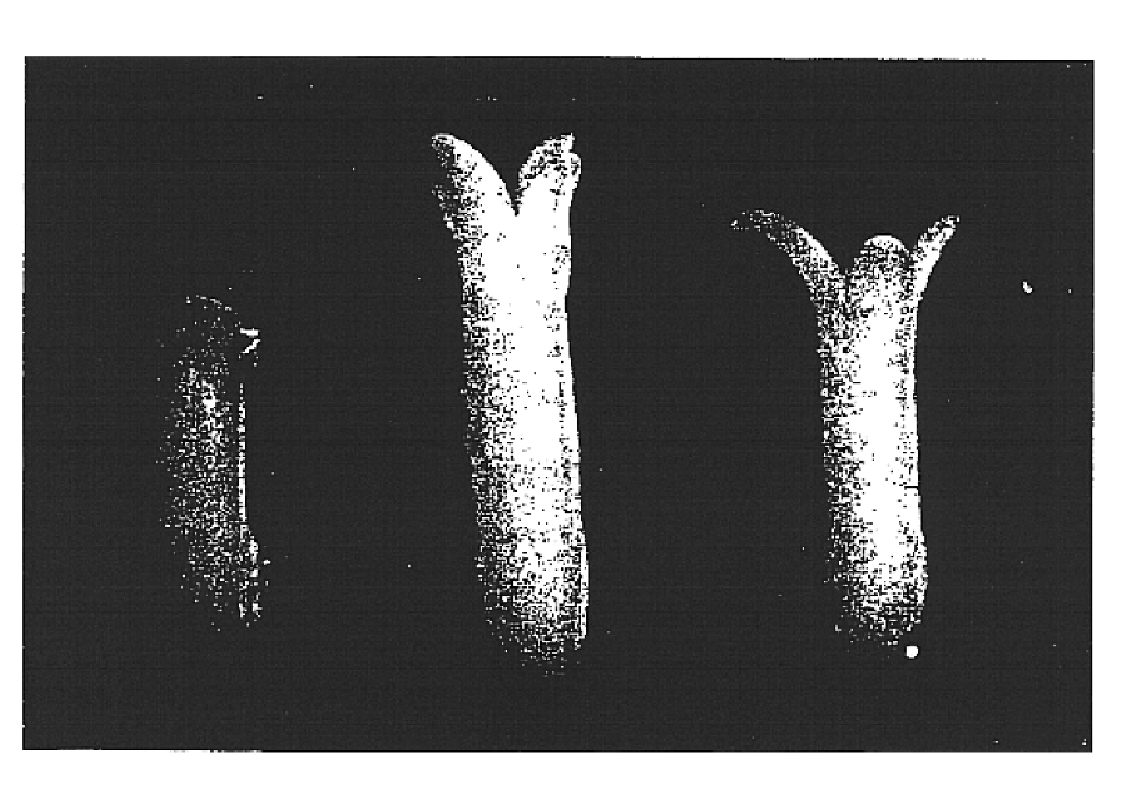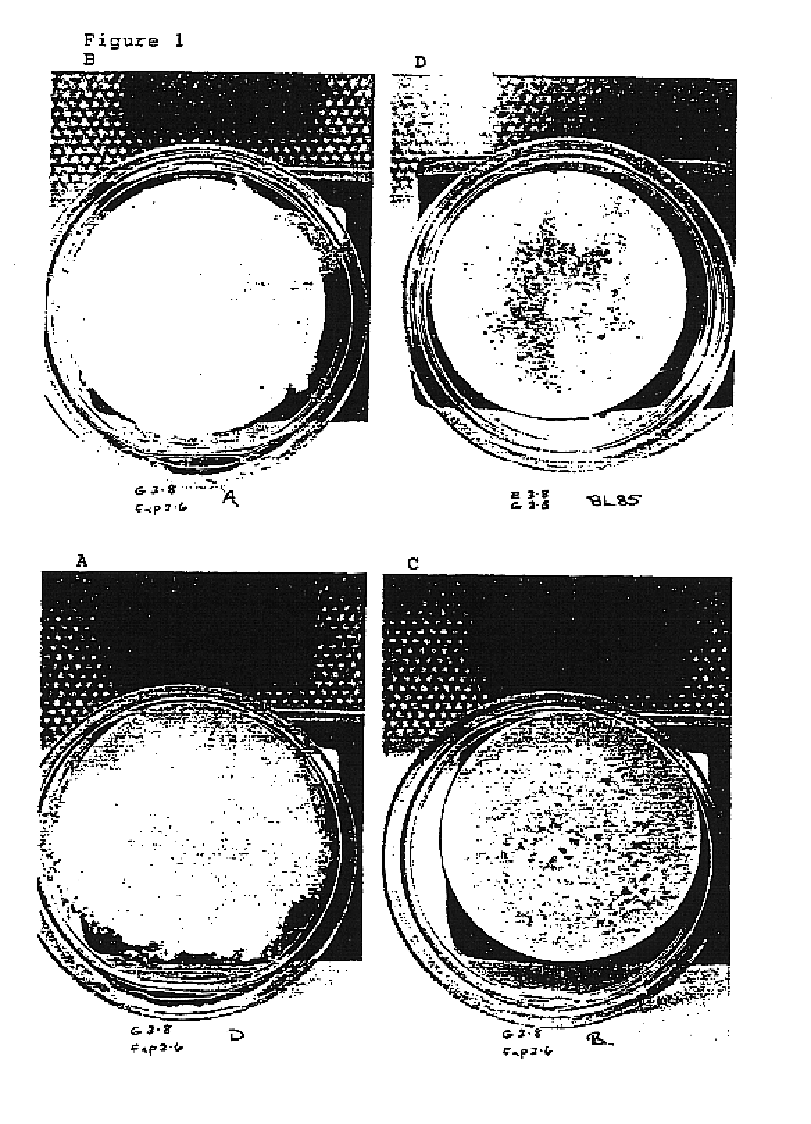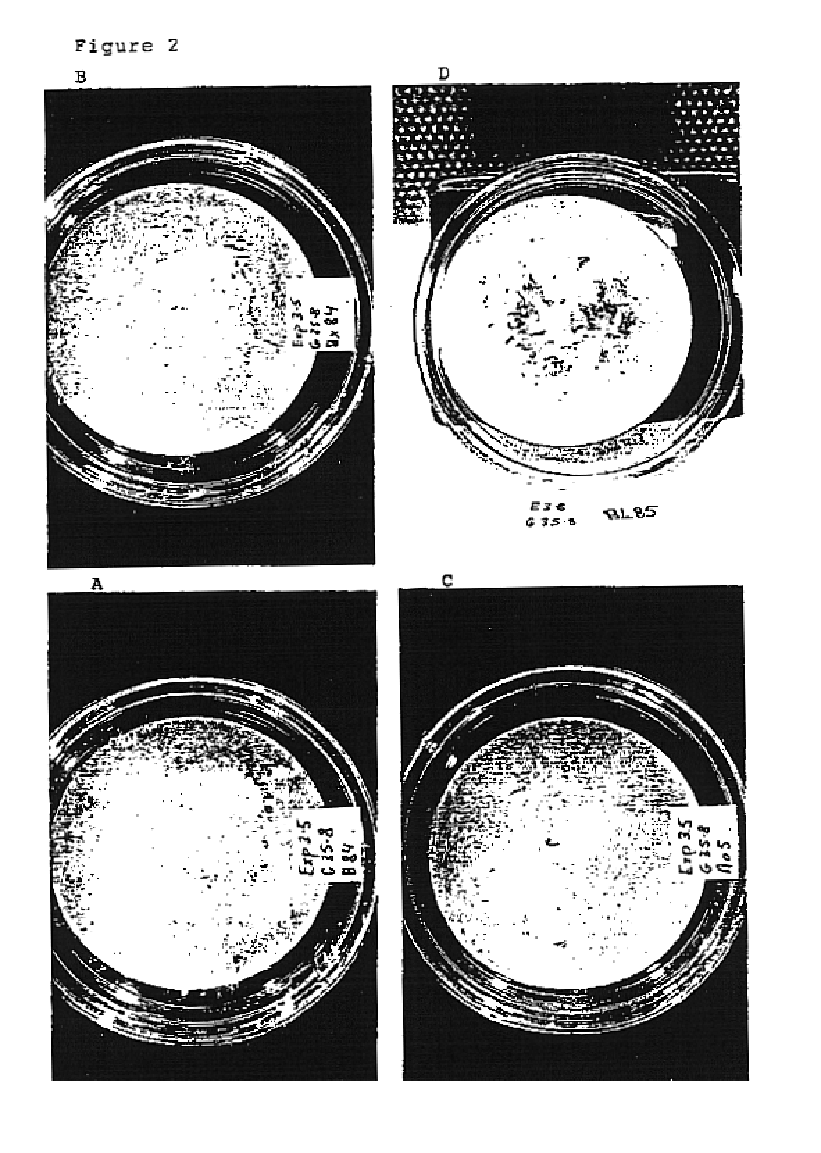Method for maturation of conifer somatic embryos
- Summary
- Abstract
- Description
- Claims
- Application Information
AI Technical Summary
Benefits of technology
Problems solved by technology
Method used
Image
Examples
example 1
Maturation in Established Cell Lines of Abies nordmanniana
Materials and Methods:
[0059]Plant Material
[0060]Three different cell lines of Abies nordmanniana were used in the present study. The tested cell lines have been in continuous culture for several years. The cell line G.3.8 was initiated from an immature zygotic embryo in 1989 on half strength MS medium (Murashige and Skoog, 1962) as described previously (Nørgaard and Krogstrup, 1991), Cell line G.35.8 was initiated from a mature zygotic embryo on SH medium in 1991 (Nørgaard and Krogstrup, 1995), and cell line G.78.14 was initiated in 1993 from an immature zygotic embryo on modified half strength BLG medium (Verhagen and Wann, 1989). From 1996, all cultures were maintained by biweekly subculture onto fresh half strength modified BLG medium and grown at 24+ / −1° C. in the dark. Cell lines G.3.8 and G.78.14 proliferated fast on maintenance medium with a doubling time of the weight shorter than 2 weeks. Cell line G.35.8 proliferat...
example 2
Maturation in Newly Established Abies nordmanniana Embryogenic Cultures
[0095]Approximately 50 cell lines were initiated from mature seeds in the same way as cell line G.78.14 (Example 1). The cultures were initiated and maintained on modified half strength BLG medium (See example 1). The cultures were less than 6 months old when they were subjected to maturation.
[0096]Protocol
[0097]The cultures were plated as described in Example 1. The cultures were subjected to two different maturation protocols.[0098]1) Maturation for 8 weeks on culture medium comprising 40 μM ABA and 5% PEG-4000.[0099]2) Maturation for as 1) but from week 2 to 4 the cultures were on culture medium comprising 40 μM ABA and 25 μM PCIB.
Results:
[0100]Preliminary experiments had shown that it was detrimental to subject these newly established cell lines to continuous anti-auxin. Therefore only one treatment comprising a short anti-auxin step was included.
[0101]First of all it should be noted that the newly establishe...
example 3
Maturation in Embryogenic Cultures of Picea abies
Plant Material
[0103]Three embryogenic cell lines, D.2.9, D.4.1, D.7.1, of Picea abies, initiated from immature seeds in 1989 and kept in cryostorage until 1998 as described by Nørgaard et al (1993) were used for the present experiment. The cultures were maintained on semi-solid proliferation medium BMI-S1 (Krogstrup 1986) gelled with 1.8 g / L gelrite by biweekly sub-cultures. Prior to transfer to maturation medium, 4 grams of cell mass from each cell line was weighed off and transferred to 50 ml liquid proliferation medium in a 250 ml Erlenmeyer flask. The flask also contained a sterile magnet.
Pre-treatment
[0104]To disintegrate the cultures they were stirred for 5 minutes using a magnet stirrer. Then the flasks were shaken for 15 minutes on a rotary shaker at 175 rpm. The medium with suspended cell aggregates were subsequently poured into a 100 ml measuring cylinder and allowed to settle for 30 minutes. The supernatant was discarded a...
PUM
 Login to View More
Login to View More Abstract
Description
Claims
Application Information
 Login to View More
Login to View More - R&D
- Intellectual Property
- Life Sciences
- Materials
- Tech Scout
- Unparalleled Data Quality
- Higher Quality Content
- 60% Fewer Hallucinations
Browse by: Latest US Patents, China's latest patents, Technical Efficacy Thesaurus, Application Domain, Technology Topic, Popular Technical Reports.
© 2025 PatSnap. All rights reserved.Legal|Privacy policy|Modern Slavery Act Transparency Statement|Sitemap|About US| Contact US: help@patsnap.com



